The Japandi style has been an interior design phenomenon in recent years – but what exactly is it, and what makes it so great for kitchens? We explain the key characteristics of the concept, and how to achieve that beautiful, balanced Japandi look in your kitchen…
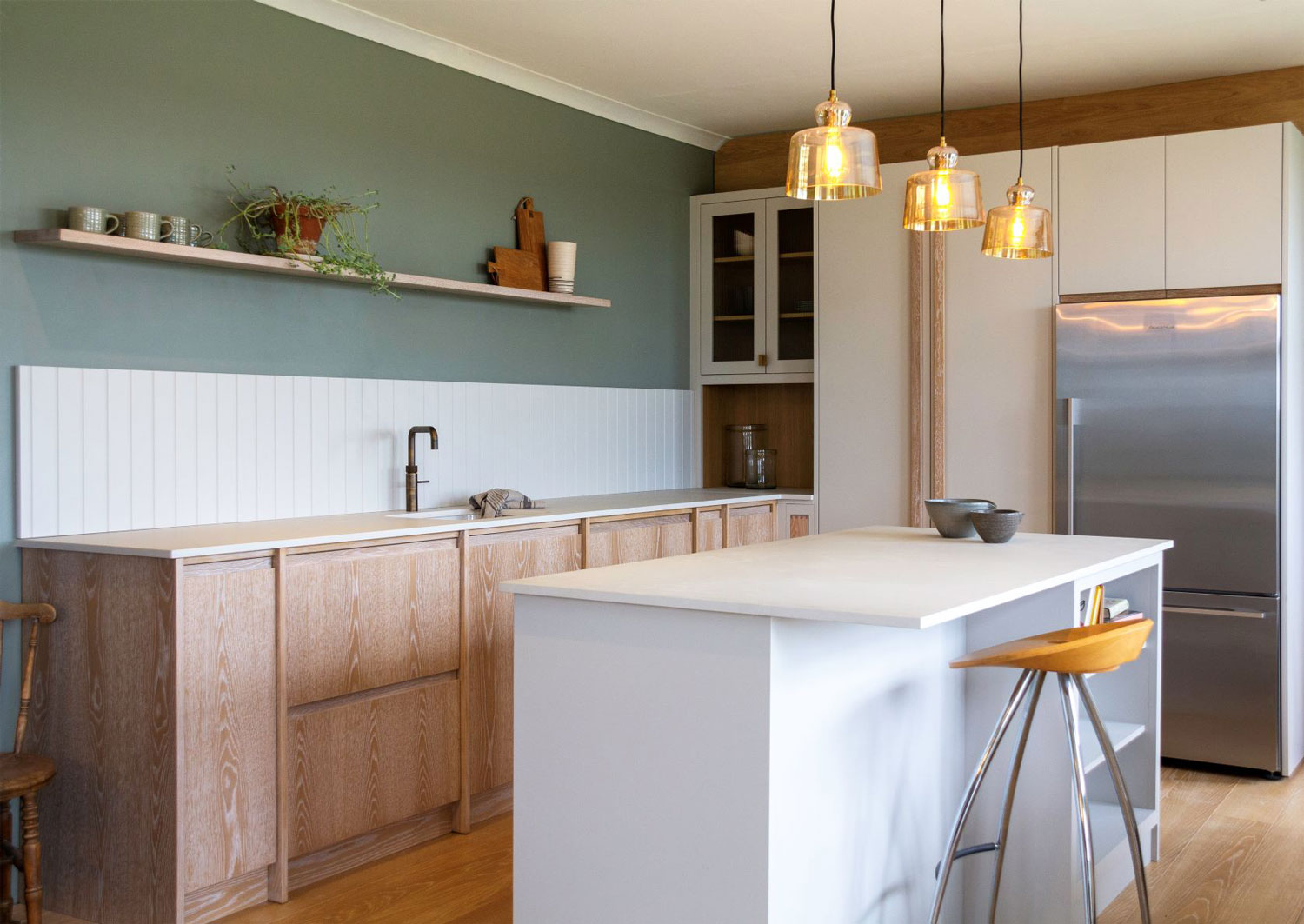
What is the Japandi style?
Japandi is a fusion of Japanese and Scandinavian interior design styles; it combines the minimalism, clean lines and zen-like tranquillity of Japanese design with the warmth and the cosy textiles of Scandinavian hygge to create a design style that’s simple, elegant and undeniably beautiful.
There has been a buzz about the concept in the interior design world for around a decade – though in fact its origins go back a long way: Scandinavian designers have been influenced by Japanese craftsmanship and aesthetics since the late 1800s.
The two countries’ design traditions have many elements in common: a focus on functionality, quality materials and craftsmanship, and a close connection with the natural world.
There are differences too. The Scandinavian color palette is dominated by neutrals and occasional soft pastel shades, whereas the Japanese aesthetic often incorporates strong colors such as dark gray or indigo. The Japanese favor dark timbers, whereas Scandinavian design usually employs paler, lighter woods.
Japandi provides the opportunity to bring all these elements together in beautiful, contemporary interiors, under a shared philosophy that emphasizes balance, sustainability, and enjoying the simple things in life.
How to bring the Japandi style to your kitchen: 6 design tips
1) Create space and light
Japandi is all about airy, calm space, so aim for clean lines with handleless cabinets and drawers, and choose hidden storage for uncluttered surfaces. Where you can, open up space vertically and make the most of natural daylight.
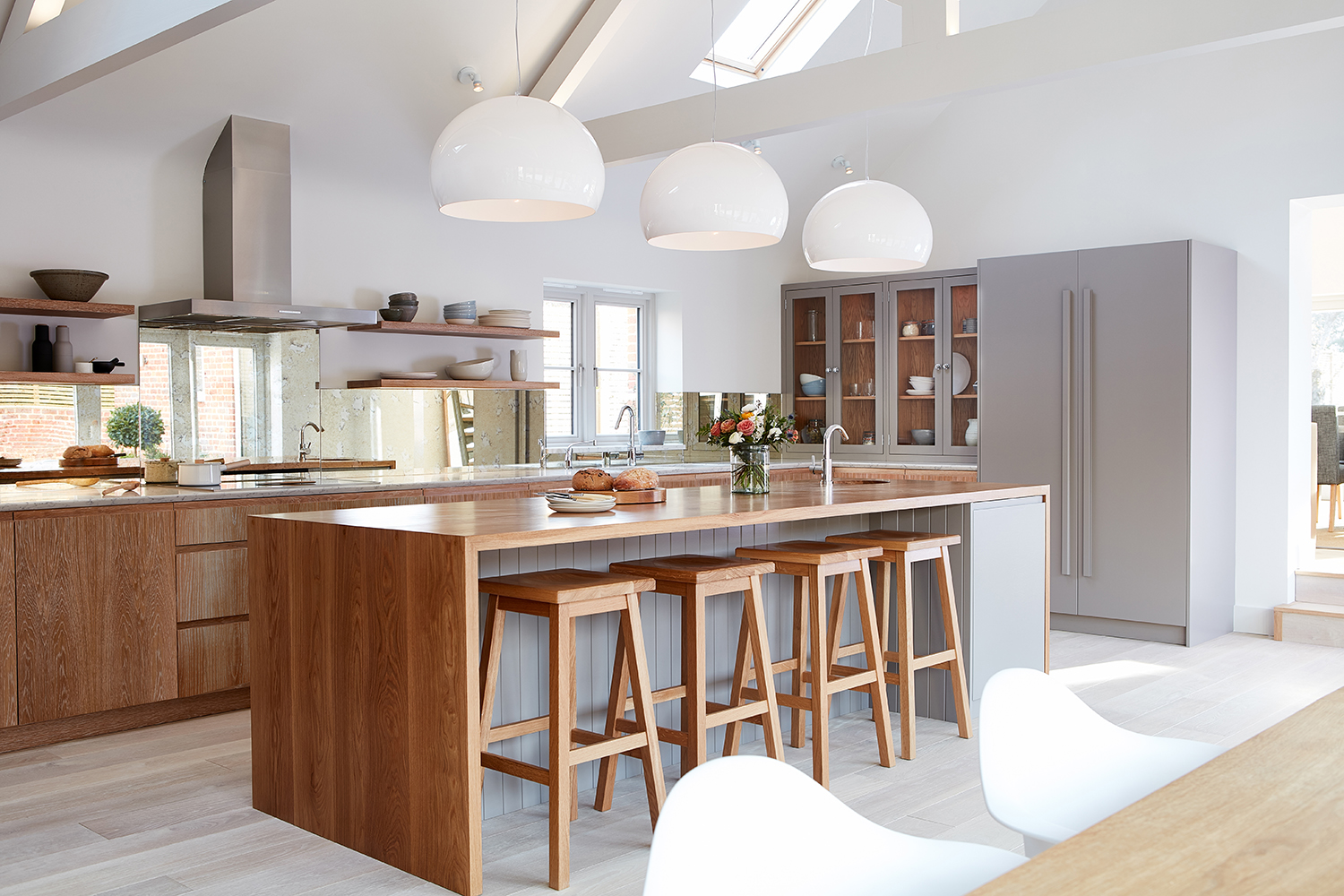
2) Use a neutral palette – with subtle additions
To emulate the Japandi style, choose a base palette of neutral, muted tones, such as beige, cream, sand, stone or taupe. You can create contrast with a light Scandinavian shade such as pale pink, blue or soft grey, or add in some darker Japanese-inspired earthy tones and accents such as indigo or charcoal grey.
Dark or metallic accessories and lighting can also help to add depth and interest to your Japandi kitchen.
3) Embrace natural materials
Both Japanese and Scandinavian aesthetics favor natural materials. Think timber, stone, marble, bamboo, wool and rattan. Rich, durable woods such as walnut or oak will bring a natural warmth to the space, while an interesting grain pattern will add depth and interest.
To make your Japandi kitchen warm and welcoming, add in some cozy Scandi layers and textures, such as a thick woollen rug, some comfy cushions or a fabric tablecloth.
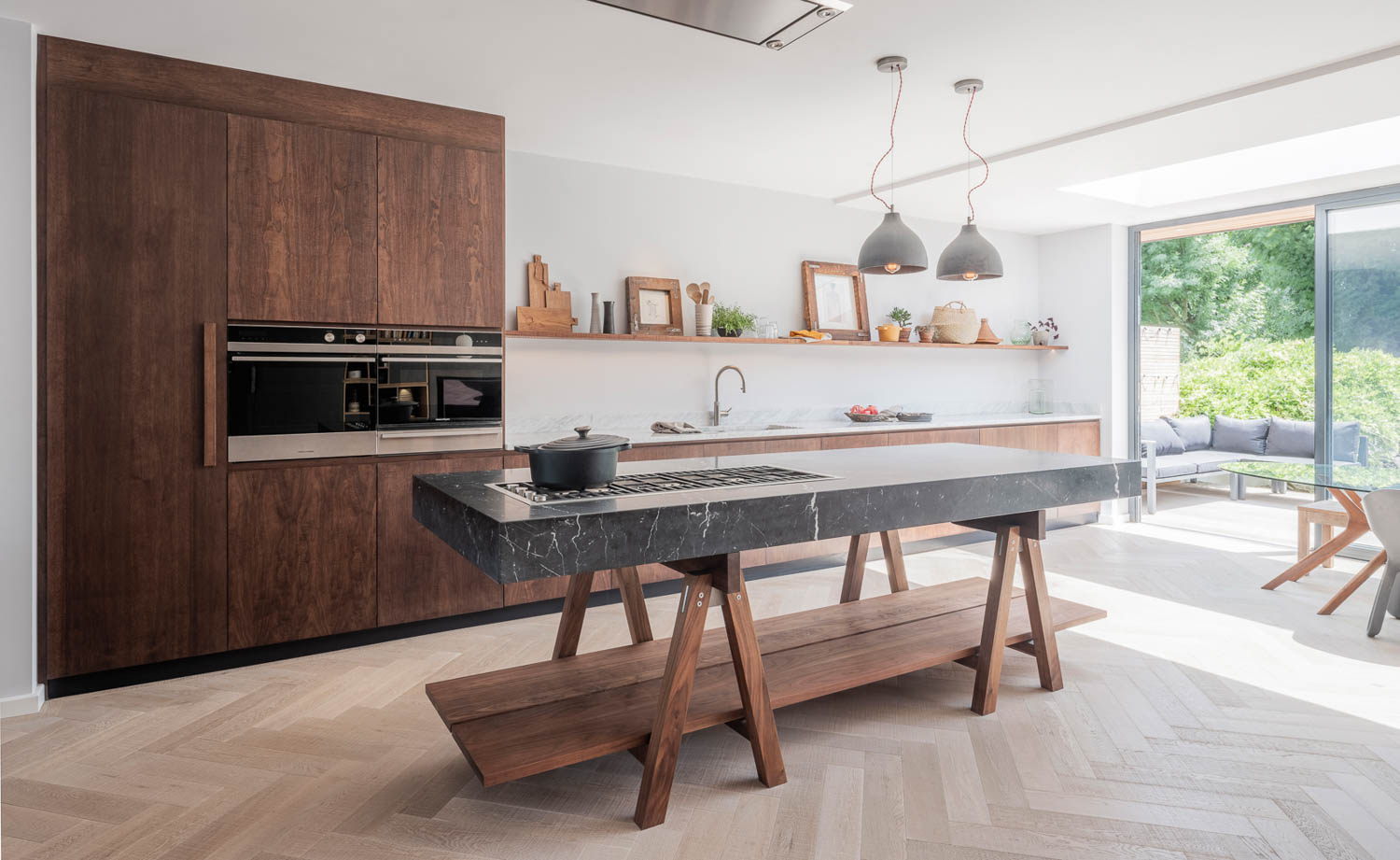
4) Celebrate craftsmanship
Simple, well-made cabinets and drawers, crafted from natural timbers, are pure Japandi.
Accessorize with handmade ceramic or glass items… And if they look handmade, all the better: that ties with the Japanese concept of wabi-sabi, which values the beauty of natural imperfection and the processes of aging and weathering.
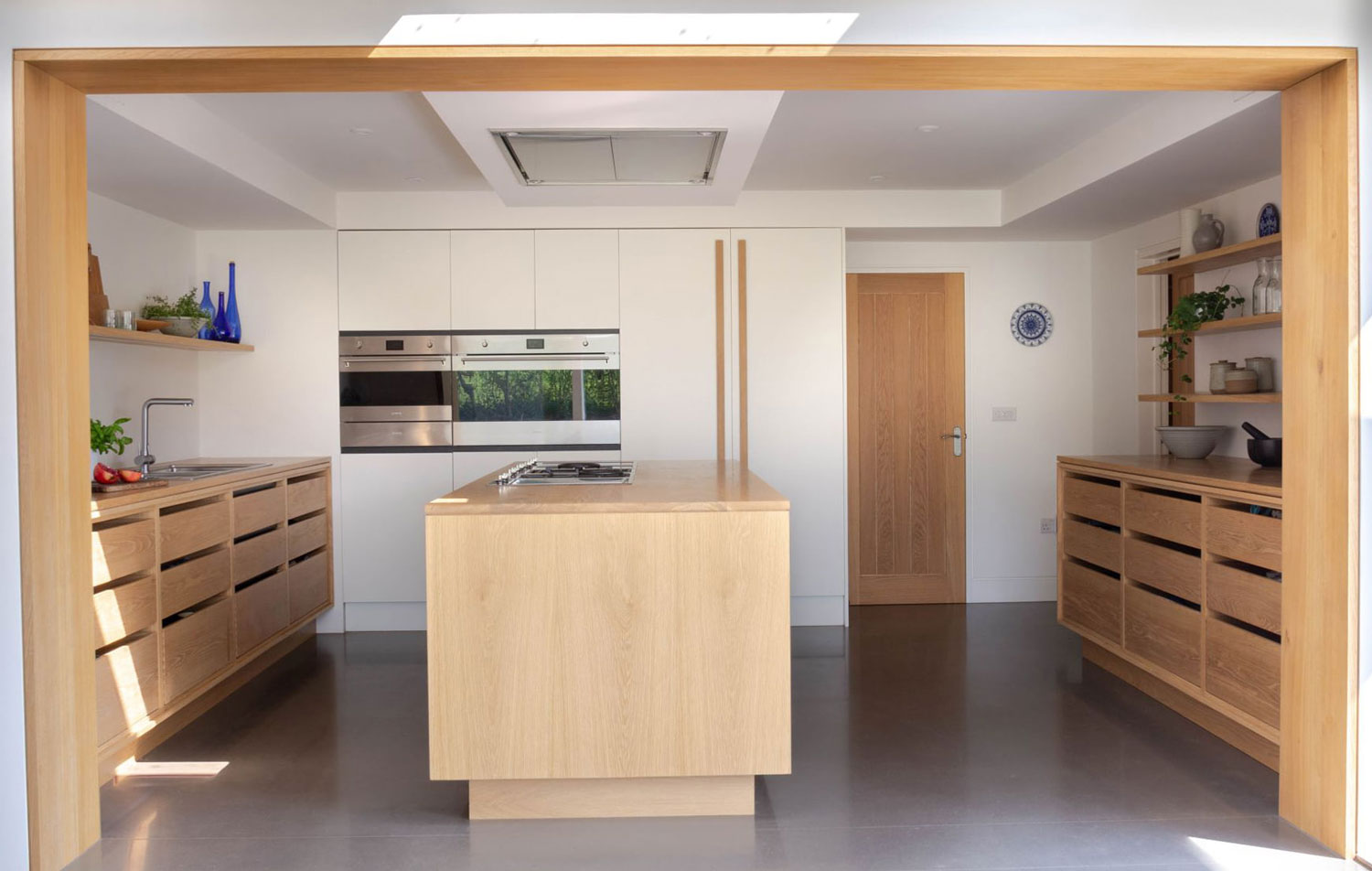
5) Bring the outside in
Nature and our relationship with the natural world play a key role in Japandi design, and plants are a quick and easy way to get the Japandi look in your kitchen. A selection of green houseplants will bring the outside in, and will help to soften the look and bring your design together.
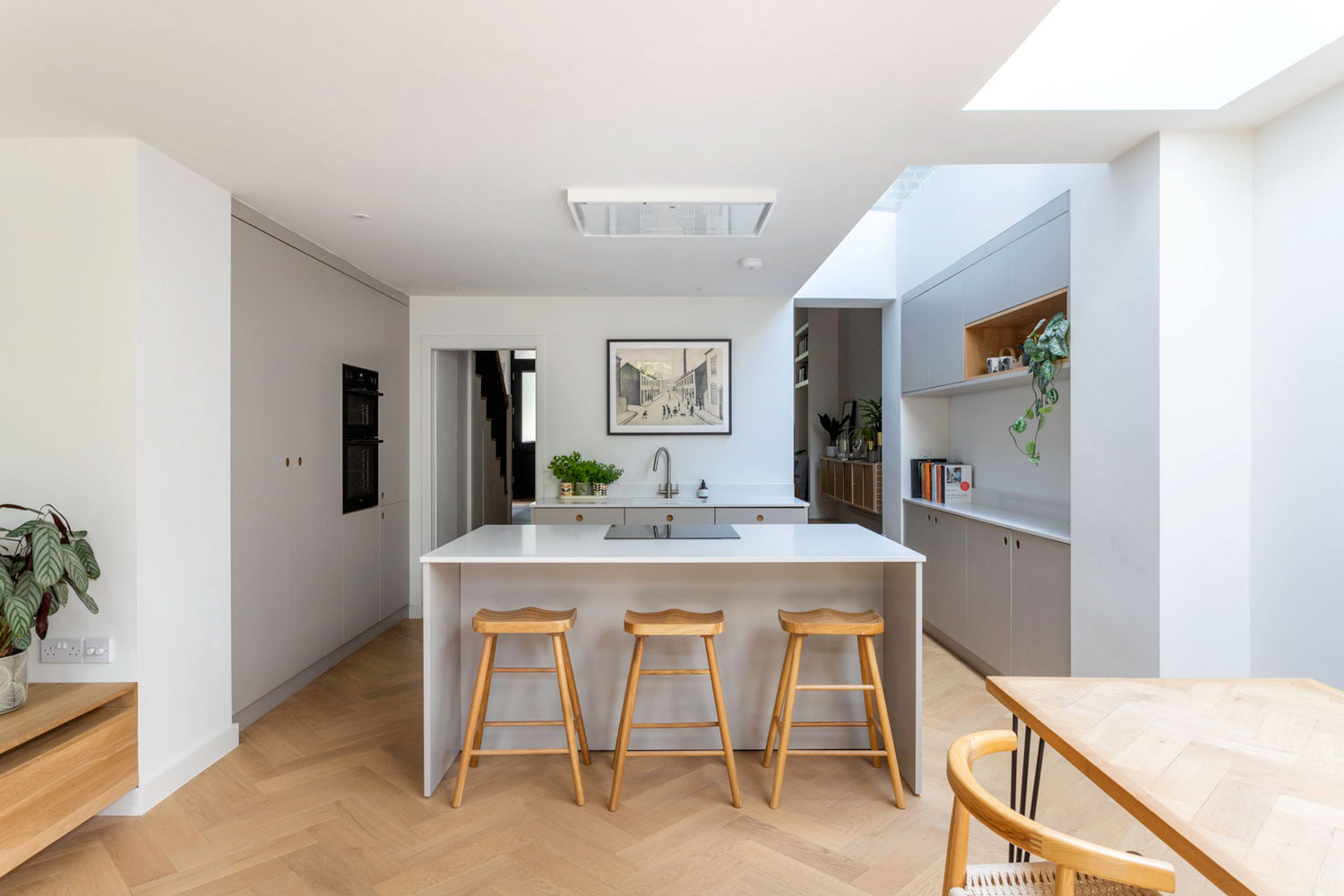
6) Focus on simplicity, balance and everyday enjoyment
When it comes to creating a Japandi look, less really is more, so aim to keep things simple and uncluttered. Your kitchen should be beautiful, natural and functional, with clean lines, quality furnishings and a few well-chosen accessories or artworks.
And above all, think about balance and harmony. When you are considering adding a new item or feature, think about what it will bring to the kitchen space: will it add or detract from that sense of calm harmony?
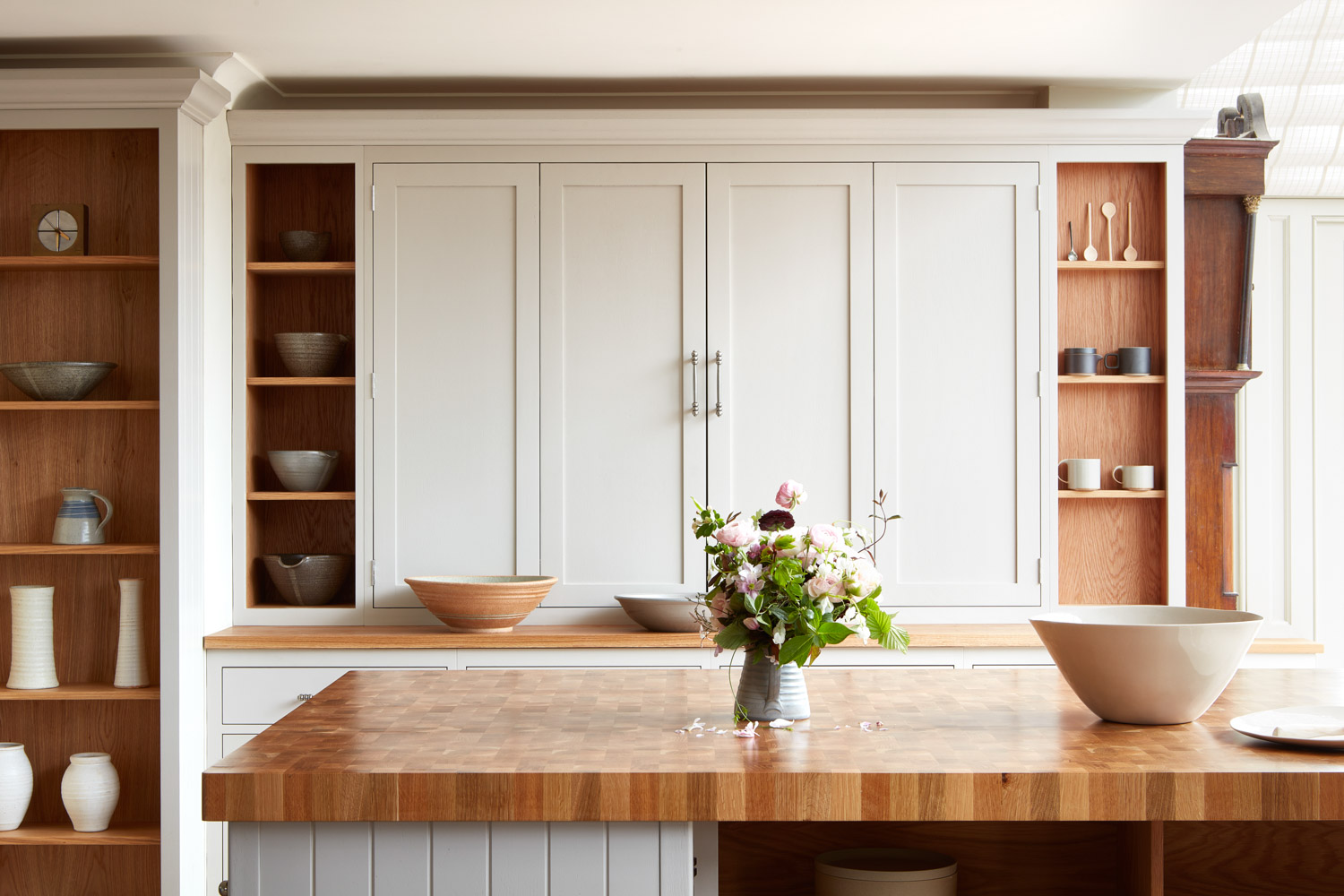
At Naked Kitchens, we love the natural beauty and simplicity of the Japandi style, and its emphasis on quality materials, craftsmanship and sustainability. (Find out more about our approach to sustainability here.)
If your dream kitchen features all of those elements, talk to us about how we can bring it to life. Here’s how to get started.
See also:
Clever bespoke kitchen storage solutions - 11 ingenious ideas to inspire you
Design for Life: A contemporary kitchen in a Victorian townhouse by Jake Lai
Kitchen ergonomics: 5 clever ways to make your kitchen design more efficient























